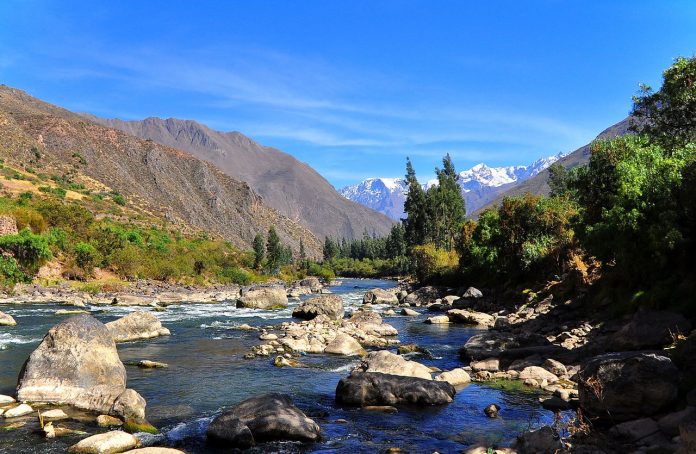The Urubamba River Valley, also known as the Sacred Valley, stretches for about 60 miles from Pisac (10 miles northeast of Cusco) to Ollantaytambo. For the Incas, the pleasant climate in the valley provided a comfortable escape from the high altitudes, and the fertile river valley was ideal for agriculture. Numerous Inca rulers built their retreats along the valley or overlooking it, and many archaeological sites are now found among this spectacular landscape of craggy mountains, precipitous valley sides and verdant terraces. Learn more about the Sacred Valley with this article of Perubybus.
The Sacred Valley of the Incas
Ollantaytambo
The archaeological site of Ollantaytambo, located in the town of the same name, was once the royal estate of the Sapa Inca (Inca ruler) Pachacuti. It also served as an important ceremonial center. Walk up the Temple Hill and you’ll see various examples of Inca stonework, including the strange Wall of the Six Monoliths. Carefully constructed water channels and fountains flow down to the base of the ruins, including the Bath of the Princess, a prime example of Inca masonry and their admirable control of water. The surrounding landscape is dotted with old Inca storehouses, quarries and agricultural terraces. All-in-all, Ollantaytambo is a hugely impressive site and one of the top attractions in the Sacred Valley.
Maras
The Maras salt ponds rank among the most instantly recognizable and unique sites in all of Peru. What at first appears to be an incongruous frost-encrusted landscape on the valley side is actually a series of salt ponds. People have extracted salt from these ponds for centuries, from before the Incas up to the present day. Today, individual families still have the rights to extract salt from specific ponds, although the salt is typically pooled into a large collective operation. The finished product, Sal de Maras (Maras salt), is exported all over the world as a high-end alternative to standard table salt.
Moray
Moray is located near the village of Maras and it is easy to combine with a trip to the salt ponds. Although very different in appearance, Moray is just as spectacular as its neighbor. The archaeological site is famous for its series of terraced circular depressions, the largest of which is about 30 meters deep and 220 meters wide. Many theories have been attached to Moray over the years, including some outlandish ideas about sound magnifiers, frequency generators, and aliens. But the most pervasive theory is that Moray was a large-scale Inca agricultural experiment. Its various circular terraces provided a range of microclimates with graduated differences in temperature, exposure to sun and other climatic variances, allowing the clever agricultural experimenters to find ideal conditions for specific crops.
Pisac
Pisac is a small, picturesque and bustling village not far from Cusco. It’s a classic starting point for tours of the Sacred Valley, and people come here for both the traditional market in the village and the Inca ruins above it. For souvenir shopping, you won’t find many better markets in Peru. It’s especially good for weaved products and textiles, as well as carved items. Old Inca agricultural terraces lead up the steep valley side to the archaeological site, which has military, religious, and agricultural structures. Pisac has also become a center for “New Age” activities in the Sacred Valley, including yoga, multi-day cleanses and guided hallucinogenic journeys.
Chinchero
Chinchero is a pretty little Andean village known for its colonial church and Sunday market. You’ll also see Inca ruins here, although they’re not as impressive as those elsewhere in the Sacred Valley. Sitting above the valley at 3,762 meters above sea level, Chinchero is even higher than Cusco. As such, it can be hard on the lungs, but it does offer some beautiful views of the surrounding mountains.
Huchuy Qosqo
This Inca archaeological site is one of the less visited attractions in the Sacred Valley, but it’s certainly worth the effort to get there. Huchuy Qosqo overlooks the Sacred Valley above the town of Lamay, from where a steep dirt road zigzags up to the ruins. Historians believe Huchuy Qosqo, which means “Little Cusco,” was probably built as a royal estate by the Sapa Inca Viracocha around 1420 AD. The ruins are comprised of storehouses, residential areas, ceremonial centers and other buildings, all surrounded by fine examples of Inca terraces. The striking architecture is made even more impressive thanks to Huchuy Qosqo’s perfect location looking up and down the Sacred Valley far below it.
If you want to know more about Cusco, continue visiting our blog!
Photo: kandooadventures.com



